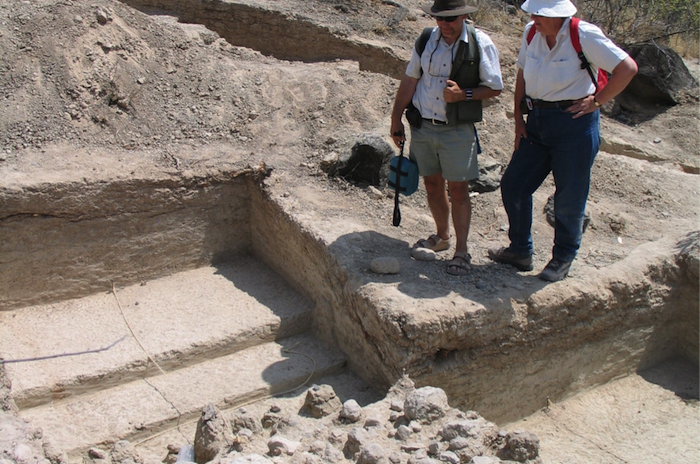Media Contacts:
Maralee Csellar: csellar gwu [dot] edu (csellar[at]gwu[dot]edu), 202-994-7564
gwu [dot] edu (csellar[at]gwu[dot]edu), 202-994-7564
Tim Pierce: tpie gwu [dot] edu (tpie[at]gwu[dot]edu), 202-994-5647
gwu [dot] edu (tpie[at]gwu[dot]edu), 202-994-5647
WASHINGTON, DC (March 15, 2018)—An anthropology professor from the George Washington University and a team of international collaborators, including scientists from the Smithsonian’s National Museum of Natural History, have discovered that early humans in East Africa used coloring materials and obtained a range of raw materials from distant sources— activities which imply the existence of social networks—about 320,000 years ago, much earlier than previously thought. These new discoveries, as well as early innovations in stone tools, occurred at roughly the same time period and120,000 years earlier than the oldest fossils of our species in eastern Africa.
Alison Brooks, a professor of anthropology at the George Washington University’s Center for the Advanced Study of Human Paleobiology and an associate of the National Museum of Natural History’s Human Origins Program at the Smithsonian, is lead author on one of three papers in Science today describing new findings from the Olorgesailie Basin in southern Kenya. The paper focuses on early evidence of social contacts with geographically distant groups more than 305,000 years ago, resulting in collection, transport and processing of materials including obsidian and color pigments at sites in the Olorgesailie Basin.
“The obsidian transport and the collection and processing of pigments imply an early development of social networks connecting members of our species across longer distances,” said Dr. Brooks. “This practice is characteristic of our species, but in contrast to our closest primate relatives, and is not implied by the material record of the preceding early Stone Age levels at Olorgesailie.”
Obsidian is a glassy volcanic stone valued for its sharp edges, and it was often used to create stone tools and other artifacts. Researchers also found examples of coloring materials such as red ochre or black manganese at Olorgesailie. These materials are used by modern people to color bodies, clothes and objects, often to symbolize status, identity or group affiliation. The team found accumulations of black manganese clustered at one site in Olorgesailie, while red ocher was scraped and dug into at another.
In recent forager societies, social networks serve as a way of mitigating the risk of resource failures by ‘saving for a rainy day’, not in a bank or grain silo or herd of cattle but in mutual obligations of help and support between individuals. Together, these new findings depict an intricate set of behaviors which emerged earlier than previously known, helping to distinguish the earlier Homo sapiens from other hominin species.
The research teams for the three studies published in Science include collaborators from the following institutions: the Smithsonian Institution, the National Museums of Kenya, George Washington University, the Berkeley Geochronology Center, the National Science Foundation, the University of Illinois at Urbana-Champaign, the University of Missouri, the University of Bordeaux (Centre National de la Recherche Scientifique), the University of Utah, Harvard University, Santa Monica College, the University of Michigan, the University of Connecticut, Emory University, the University of Bergen, Hong Kong Baptist University and the University of Saskatchewan. Additionally, many of Professor Brooks current and former master’s and doctoral students worked on the project and some are authors on one of the papers.
Funding for this research was provided by the Smithsonian, the National Science Foundation and the George Washington University, along with a wide range of private and governmental sources, both national and international.
-GW-


